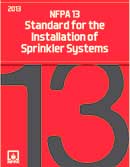 Polyurethane foam fires are known to produce very high heat release rates and extremely toxic fumes. As a result, these types of fires provide some unique life, firefighter, property safety and fire suppression challenges. In this study polyurethane foam fires and their combustion processes are investigated using the Fire Dynamics Simulator. The software tool’s predictions were validated against test results from experimental burns. Comparisons between simulation and fire tests demonstrated unprecedented good correlation. This formed the foundation of this study validating the model and providing reliable insights into the nature and sequence of the various combustion events taking place. Read more…
Polyurethane foam fires are known to produce very high heat release rates and extremely toxic fumes. As a result, these types of fires provide some unique life, firefighter, property safety and fire suppression challenges. In this study polyurethane foam fires and their combustion processes are investigated using the Fire Dynamics Simulator. The software tool’s predictions were validated against test results from experimental burns. Comparisons between simulation and fire tests demonstrated unprecedented good correlation. This formed the foundation of this study validating the model and providing reliable insights into the nature and sequence of the various combustion events taking place. Read more…
 The 2013 Edition of NFPA 13 will be adopted by many states and jurisdictions in January 2014. In this article we will be focusing on major changes for this latest edition of NFPA 13 and specifically in the application and use of ESFR (Early Suppression, Fast Response) sprinkler systems. Read more…
The 2013 Edition of NFPA 13 will be adopted by many states and jurisdictions in January 2014. In this article we will be focusing on major changes for this latest edition of NFPA 13 and specifically in the application and use of ESFR (Early Suppression, Fast Response) sprinkler systems. Read more…
 NFPA’s Fire Protection Research Foundation has released a research report on a study of flammability of lithium-ion (Li-ion) batteries in bulk storage. The results of these tests will be used to define appropriate sprinkler protection in NFPA 13 for these types of products. Three types of Li-ion batteries commonly used in various consumer products were chosen for these fire tests. They were stored in rack storage configurations up to 15 ft high. Read more…
NFPA’s Fire Protection Research Foundation has released a research report on a study of flammability of lithium-ion (Li-ion) batteries in bulk storage. The results of these tests will be used to define appropriate sprinkler protection in NFPA 13 for these types of products. Three types of Li-ion batteries commonly used in various consumer products were chosen for these fire tests. They were stored in rack storage configurations up to 15 ft high. Read more…
 How much do you know about fire sprinkler systems? If you are a business or a building owner, an architect, or a member of the construction industry, you may be interested in some of these commonly asked questions on sprinkler protection. Explore with us sprinkler terminology, application and use of various types of sprinkler heads, issues arising from change in occupancy or change in use, solutions to common problems, and some simple ‘rules of thumb’ Read more…
How much do you know about fire sprinkler systems? If you are a business or a building owner, an architect, or a member of the construction industry, you may be interested in some of these commonly asked questions on sprinkler protection. Explore with us sprinkler terminology, application and use of various types of sprinkler heads, issues arising from change in occupancy or change in use, solutions to common problems, and some simple ‘rules of thumb’ Read more…
 NFPA’s Fire Protection Research Foundation is conducting a research project on Lithium-ion battery flammability characterization. The objective of this research is to ‘provide a comparative flammability characterization of common Lithium-ion batteries (as compared) to standard commodities in storage’. This project is part of a multi-phase research effort to develop information for fire protection strategies in Lithium battery storage. Read more…
NFPA’s Fire Protection Research Foundation is conducting a research project on Lithium-ion battery flammability characterization. The objective of this research is to ‘provide a comparative flammability characterization of common Lithium-ion batteries (as compared) to standard commodities in storage’. This project is part of a multi-phase research effort to develop information for fire protection strategies in Lithium battery storage. Read more…
 On June 27 the Research Foundation and NFPA’s international operations department presented a seminar on research to address high challenge storage protection for aerosols, lithium batteries, flammable and combustible liquids, automated storage and retrieval systems, and others. 110 attendees from 17 nations attended this event in Paris, France to explore the latest global research and emerging trends on storage protection. Read more…
On June 27 the Research Foundation and NFPA’s international operations department presented a seminar on research to address high challenge storage protection for aerosols, lithium batteries, flammable and combustible liquids, automated storage and retrieval systems, and others. 110 attendees from 17 nations attended this event in Paris, France to explore the latest global research and emerging trends on storage protection. Read more…
 Explore with us in this extended and updated article the do’s and don’ts of ESFR sprinkler systems. We added a section on the changes of the most recent 2010 edition of FM 8-9 by FM Global, and a FAQ on the instances where in-rack sprinklers are required when the building is equipped with an ESFR system Read more…
Explore with us in this extended and updated article the do’s and don’ts of ESFR sprinkler systems. We added a section on the changes of the most recent 2010 edition of FM 8-9 by FM Global, and a FAQ on the instances where in-rack sprinklers are required when the building is equipped with an ESFR system Read more…
 The University of California, San Diego is performing one of the largest fire and structural research projects in the United States. Full-scale fire tests will be conducted on May 9th – 11th 2012 to assess the performance of active and passive fire protection systems and impacts and effects of fire spread and smoke movement in an earthquake-damaged high-rise building Read more…
The University of California, San Diego is performing one of the largest fire and structural research projects in the United States. Full-scale fire tests will be conducted on May 9th – 11th 2012 to assess the performance of active and passive fire protection systems and impacts and effects of fire spread and smoke movement in an earthquake-damaged high-rise building Read more…
 The Society of Fire Protection Engineers is providing a FREE webcast on Water Mist Fire Suppression on Wednesday, May 2nd from 11:00 AM – 12:00 PM (PT). Reviewed are Water Mist technology applications for data centers, marine vessels, offshore installations and power generation sites. The session will explain the critical changes to and requirements of NFPA 750. Read more…
The Society of Fire Protection Engineers is providing a FREE webcast on Water Mist Fire Suppression on Wednesday, May 2nd from 11:00 AM – 12:00 PM (PT). Reviewed are Water Mist technology applications for data centers, marine vessels, offshore installations and power generation sites. The session will explain the critical changes to and requirements of NFPA 750. Read more…
 Some municipal water authorities have assessed water fees related to the recovery cost of unmetered water used in the event of a fire in sprinklered buildings. However, owners and operators of unsprinklered buildings have typically not been assessed this fee – even though water usage is also unmetered during a fire. This is even more surprising given the expectation that buildings equipped with a fire protection system use less water during a fire than buildings without a fire protection system. To add to the confusion, Read more…
Some municipal water authorities have assessed water fees related to the recovery cost of unmetered water used in the event of a fire in sprinklered buildings. However, owners and operators of unsprinklered buildings have typically not been assessed this fee – even though water usage is also unmetered during a fire. This is even more surprising given the expectation that buildings equipped with a fire protection system use less water during a fire than buildings without a fire protection system. To add to the confusion, Read more…
 Polyurethane foam fires are known to produce very high heat release rates and extremely toxic fumes. As a result, these types of fires provide some unique life, firefighter, property safety and fire suppression challenges. In this study polyurethane foam fires and their combustion processes are investigated using the Fire Dynamics Simulator. The software tool’s predictions were validated against test results from experimental burns. Comparisons between simulation and fire tests demonstrated unprecedented good correlation. This formed the foundation of this study validating the model and providing reliable insights into the nature and sequence of the various combustion events taking place. Read more…
Polyurethane foam fires are known to produce very high heat release rates and extremely toxic fumes. As a result, these types of fires provide some unique life, firefighter, property safety and fire suppression challenges. In this study polyurethane foam fires and their combustion processes are investigated using the Fire Dynamics Simulator. The software tool’s predictions were validated against test results from experimental burns. Comparisons between simulation and fire tests demonstrated unprecedented good correlation. This formed the foundation of this study validating the model and providing reliable insights into the nature and sequence of the various combustion events taking place. Read more…













